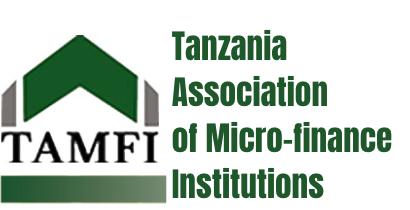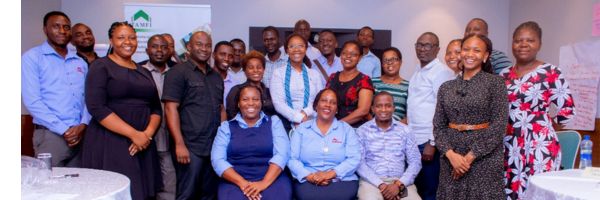Habitat for Humanity International (HFHI), Terwilliger Center of Innovation for shelter, in partnership with the Tanzania Mortgage Refinance Company (TMRC) has launched a housing microfinance report. The market research for the report was conducted by Altair Consultancy with a purpose of evaluating the current status of the housing market, investigate the demand for new housing microfinance (HMF) products, and provide HFHI and TMRC with insights into how local financial institutions (FIs) can both create and participate in Tanzania’s emerging HMF market.
Key Findings:
• Low- and middle-income Tanzanian households face a number of housing challenges, including insufficient housing supply, overreliance on insecure, inadequate self-build informal housing, rising building materials costs, irregular income making it harder to plan for housing-related spending and/or access housing finance, and difficulties servicing outstanding loans.
• Generally, financial institutions in Tanzania lack prior awareness of HMF. However, from the study, there were two who had past experience in providing HMF products. Both institutions offered loans that could be used for the purposes of incremental housing construction, and were capped at 10,000,000 TZS ($4,267). One of the products could also be used for renovation or improvement of an existing home. The loans differed in their duration, interest rate, application fees (or lack thereof) and some other characteristics. Overall, both institutions were satisfied with the performance of the loans, but were unable to meet demand due to lack of long-term affordable funding.
• Respondents highlighted a number of risks and challenges involved in developing the HMF market. Lack of financing was the most-mentioned, but others included: difficulties in assessing credit risk, the possibility of title fraud or loan diversion, and lack of delivery capacity.
• Despite the risks and challenges mentioned, most respondents were enthusiastic about the future potential of HMF in the Tanzanian market, noting the high demand for housing solutions and the compatibility of HMF with the prevailing culture of incremental self-build.
The Housing Microfinance report has highlighted top 5 recommendations on how to build a robust HMF market in the country:
1. Raise awareness and evangelize HMF: There is a critical need for sensitization of Lenders and other ecosystem partners (Funders in particular) on the concept of HMF and how this product offers a viable alternative to a normal microfinance loan or a housing/mortgage loan to service a market need. Aspects like risks associated with asset repossession were another fear for Banks, which does not apply in this loan to begin with. In addition, HMF can be used for several purposes other than housing (see box below). Overall, the study found very low levels of awareness on this product across all industry actors.
2. Create a specialized HMF Fund for Tanzania: On the lines of the HMF Fund administered by the BOT, there is a need to create a specialized line of funding for this product through an anchor institution like TMRC with the capacity to lend to a variety of lenders. This proves to be the biggest bottleneck for lenders to venture into this segment, this requires an immediate solution at scale. Issues to be addressed include eligibility, pricing and on-lending rates, tenure, funding in local currency, and creation of a housing bond.
3. Link Funding to a well-designed Capacity Building Program: One international funder stressed the idea that capacity of institutions to offer HMF is likely to be low and therefore any fund that could be designed for HMF should necessarily be accompanied by Technical Assistance and Capacity building programs on basics of HMF, such as, pricing strategies, hiring and staffing, HMF specific credit policy design and HMF loan application templates and guidelines to mention a few.
4. Making Tanzanians credit friendly and credit capable needs a focus on financial literacy: While this is a larger financial ecosystem problem, initial HMF pilot programs will benefit from including some basic form of financial literacy training along with basic CTA orientation for households in conjunction with a HMF loan.
5. Experiment with old and new ideas emerging in the financial ecosystem: Trying both old and new innovative models of HMF which have been successful in different geographies such as HMF can be utilized to finance multiple facets of housing with ample evidence of success of different models from across the globe, experimenting with alternative data from TELCO or mobile phone to supplement traditional income assessment.
Furthermore, the report gave detailed recommendation on Product design that can contribute in building a robust market for HMF in Tanzania:
1. Positioning, branding and nomenclature
2. End use of the loan
3. Preferred lenders
4. Preferred loan amount
5. Preferred of affordable monthly repayments
6. Preferred tenure
7. Potential collateral arrangements
8. Assessing property legal risk
9. Potential loan to cost ratios
10. Women as a borrower or co-borrower
11. Mode of disbursement and collection
12. Loan utilization checks (LUC’s)
Key insights on financial inclusion and housing microfinance in Tanzania drawn from Finscope study 2023:
· There is a strong desire for Tanzanian adults to own a house or property as a main future spending need. 40% want to own a house and 21% wish to own land/farm.
· Land ownership still remains an addressability barrier in access to finance. Only 15% own land. Women are more likely to be affected, since women are still significantly less likely to own land, hence fail to have a formal collateral.
· Majority of Tanzanians borrow/save to smoothen cash flow. Almost two thirds 66% of adult Tanzanians are struggling to keep up with regular expenses. Only 3% borrow to buy, build a house or make improvements/repair/renovate their houses.
· Incomes are seasonal. 40% of Tanzanian adults earn their incomes through trading and farming.
· Formal financial inclusion has grown to 76% attributed to mobile money and digital financial services. Good sign for housing loans in order to cut down costs.
· Majority of financial customers are satisfied with product/services they access and also significantly satisfied with pricing and especially so for SACCOS and CMGs clients.

